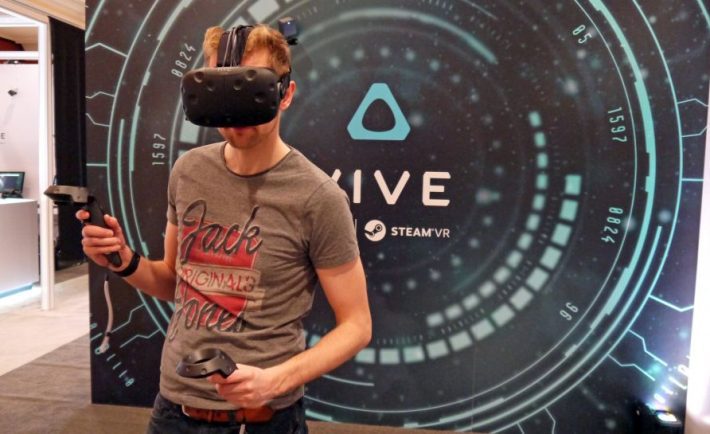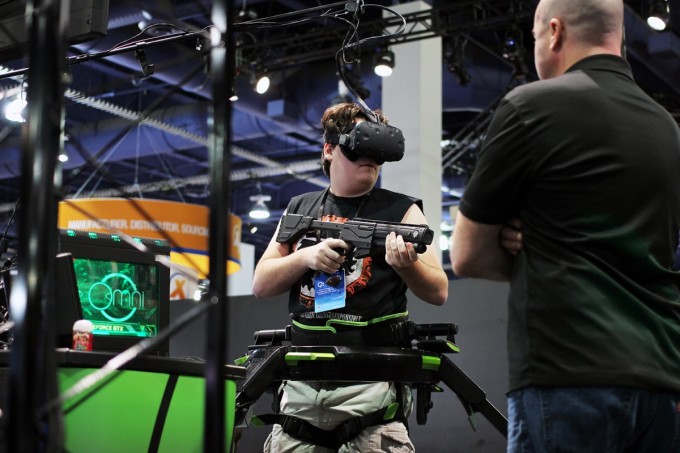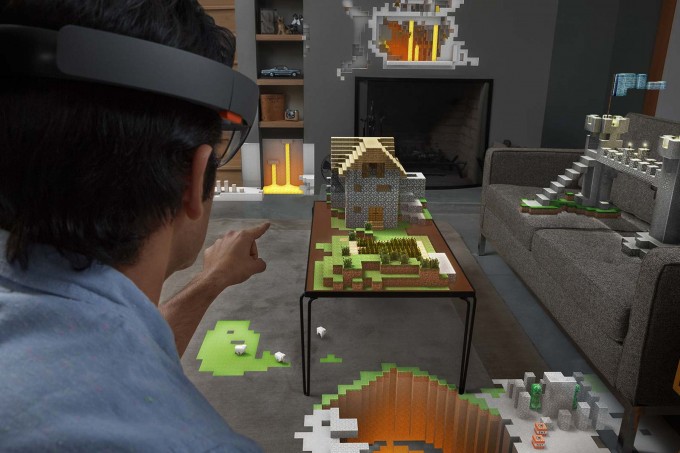
The ground is rumbling. Can you feel it? The bells of war are ringing and the great wheels of industry are churning to support it.
No, this isn’t World War III. What is happening though, is the next progression in the grand video game console wars. Just as the N64, with it’s 3D graphic, opened up a new chapter in the conflict between game companies, Virtual Reality headsets are the battleground for a new war.
But VR Headsets Are Just A Fad Right?

AMD: VR is here to stay, but there’s a lot of room for improvement
Any time innovative tech is in the works, skeptics everywhere discount it, saying it will never catch on. And to be fair, about half the time, they’re right. Just look at Google Glass. Google claimed it would be the next big tech wearable, but it quickly fell apart and people lost interest. It didn’t have the support of the normal population and was very limited in its real life applications.
There’s one big difference though that is making VR more than a fad. It has the crushing support of different communities, especially the gaming community. It also has the support for several different tech companies, from Google to Samsung to HTC.
Part of why fads fail is because people don’t know what to do with them in the long term. A new piece of technology has to be accessible to everybody and be useful in a variety of ways to remain for years and decades to come. VR is able to fit both of these requirements. Entry level VR headsets are easy to buy, and everyday new people come up with innovative ways to use the tech.
The obvious application is with video games and watching videos, but people are now creating VR amusement attractions, utilizing VR to assist doctors with delicate surgeries, and using it to perform marketing research. This extra support from other industries will keep VR relevant for a long time.
VR’s Battlefields and Markets

NOBODY WANTS A VR PLATFORM WAR, BUT OCULUS MAY START ONE ANYWAY
As of right now, there are two separate classifications for VR. There are the headsets and rigs meant for higher end immersion and then there are the more affordable standalone headsets that have less power. These two different areas of VR are the main battlegrounds where different companies will be competing for VR customers.
The higher end VR headsets are expensive. Along with purchasing a $700 VR headset, you have to own a computer powerful enough to run it, which could be another $600, or more, purchase. To the average consumer, this price tag is ludacris, but to the right market, it’s worth it. These high end VR headsets are extremely attractive to more dedicated video gamers, who is the main market for them. That’s why most of the applications for high end VR are games.
On the opposite end of the spectrum, there are the inexpensive headset. Most of these only require a compatible smartphone (which most Americans already own) and the headset to hold said phone. You can get a Google Cardboard headset for $15 or a nicer, sturdier one for around $50 to $100. While you can play some games on them, most of these headsets are meant for viewing 360 degree videos and films designed for VR. These headsets are easily accessible for the general public, both in price and power.
The Next Console War Is Starting

New, more powerful PlayStation 4 is code named NEO
In these two markets, competition and rivalries are appearing quickly. For the higher end of consumers, the two main VR headsets are the HTC Vive and the Oculus Rift. When comparing the two headsets, you can’t help but relate back to the beginning of the video game home console wars between Nintendo and Sega. While both products are very similar, there are small differences that make them stand out. HTC Vive has a headset, motion controls, and movement tracking cameras, but has a bigger price tag and requires a large dedicated space for it. Oculus Rift comes with a headset, an Xbox One controller, and integrated 3D headphones. Both include a few games to help consumers get familiar with the tech and both require a powerful computer to run.
Sony and Microsoft are also starting to pursue VR (and Augmented Reality with the Microsoft Hololens) for their home consoles, and will soon join this competition. Their price tags are a little lower and will also pair up with video game consoles and home computers, bringing a new level of accessibility to a more high end VR.
In the lower cost VR headsets, the competition has a lot more familiar faces in it. Samsung has the Gear, Google has Cardboard, LG has the 360 VR. There are also a lot of new tech companies too, offering similar headsets with minor difference in features. The main competition though will remain between the big brand names, very similar to smartphones and tablets.
Choose How The Industry Will Develop

Virtual reality is for watching things. HoloLens is for making them
These companies are fighting over us, so we are the ones that determine the winners and losers. With our wallets, we can support the direction we want the VR industry to pursue. Want VR to be more physical, using motion controls? Support the Vive. Looking to just use a game controller with the headset? Buy the Rift. Don’t like either of these options, but think 360 degree videos are the coolest? Buy a lower cost VR like a Samsung Gear or Google Cardboard.
It’s still far too early to determine a winner, but as the competition increases, VR headsets will become more impressive and more affordable. Over time, many companies will drop out of the war until there is only a few companies left, creating more focused and more immersive headsets. Very rarely do consumers have such a strong voice in an industry, so if VR is important to you, be sure to support it in the direction you want it to go.
Have you had a chance to try out a HTC Vive or Oculus Rift? Do you own a Google Cardboard headset? Do you agree with me that VR headsets are more than a fad? Let us know in the comments below.




